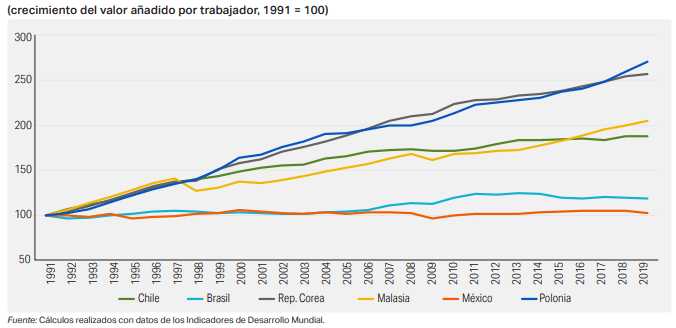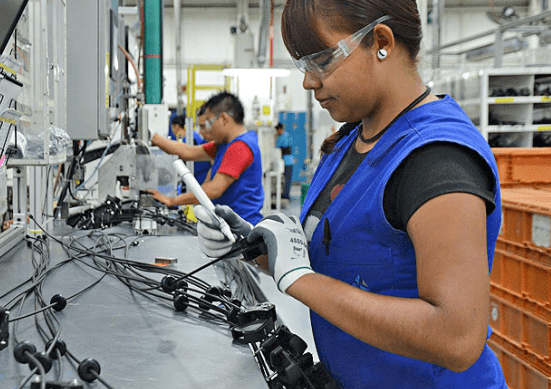Low aggregate productivity has been the main factor that has slowed long-term economic growth in Mexico, concluded a study released by the World Bank.
First of all, GDP growth since 1990 has averaged just 2.2% a year, and GDP per capita relative to the United States fell from nearly 30% in 1990 to less than 20% in 2019.
Empirical evidence suggests that the main cause behind Mexico’s lackluster economic growth has been declining productivity.
Leonardo Iacovone Rafael Muñoz Moreno Eduardo Olaberria Mariana De La Paz Pereira López prepared this report. They seek to understand the reasons behind Mexico’s poor productivity performance, and identify policies to reverse the trend.
Since 1990, Mexican economic growth has been based mainly on the accumulation of labor and, to a lesser extent, on the accumulation of capital.
Labor productivity has stagnated in Mexico since 1990
Labor accumulation has been significant (particularly in quantity, rather than quality) despite the constraints caused by migration, crime, violence and, in particular, the low participation of women in the labor force .
Likewise, capital accumulation has been characterized by low investment rates, particularly in public infrastructure, which hampers economic growth and creates bottlenecks in sectors of the economy such as telecommunications and transportation.
Thus, the gains achieved by the accumulation of factors of production in Mexico have been offset by negative growth in total factor productivity (TFP). In fact, average labor productivity did not improve between 1990 and 2019.
Productivity
There is a high degree of heterogeneity in productivity performance across states, sectors, and firms. Aggregate productivity trends in Mexico are determined by structural factors operating at the industry or firm level, which show considerable variation.
Therefore, understanding the aggregate productivity of Mexico requires analyzing the heterogeneity between regions, sectors and companies.
The report carries out, for the first time, a comprehensive analysis at the company level of the entire Mexican economy over 25 years, based on the last six rounds of the Economic Censuses, which were carried out between 1994 and 2019 and surveyed more than 20 million companies.
![]()

